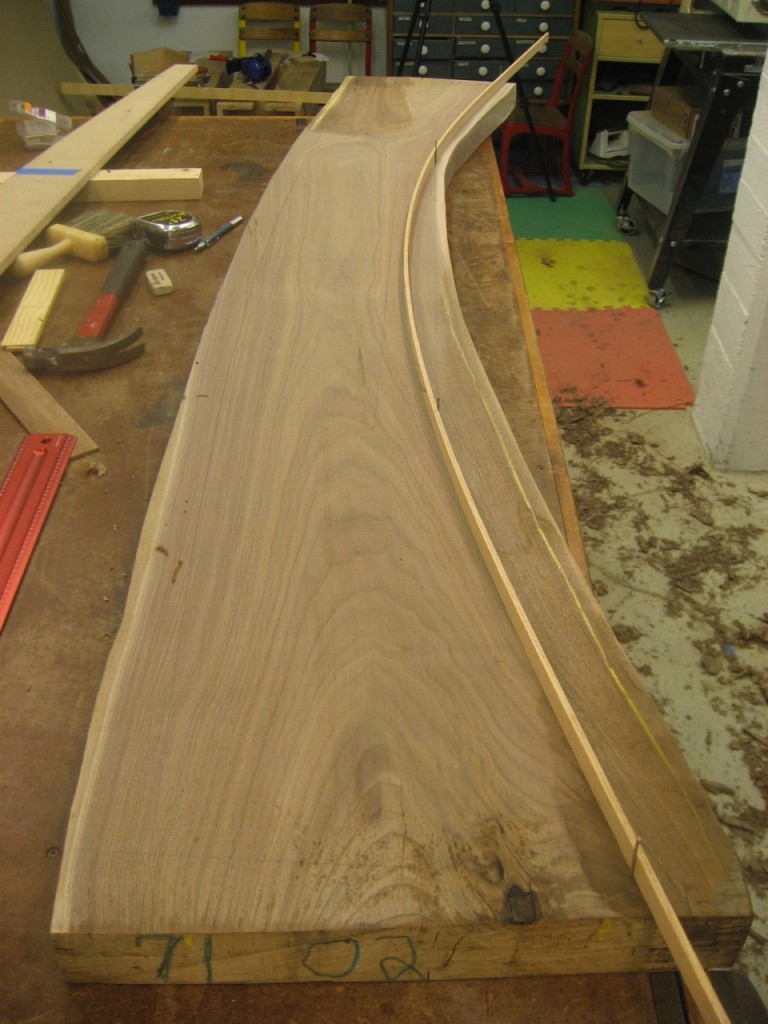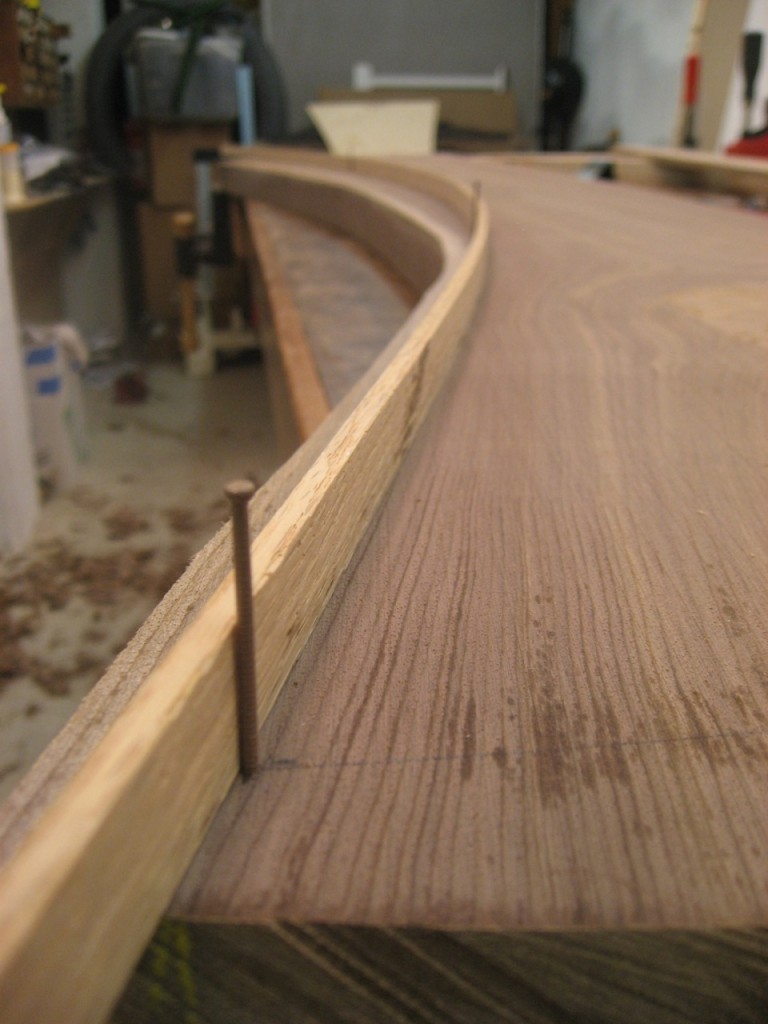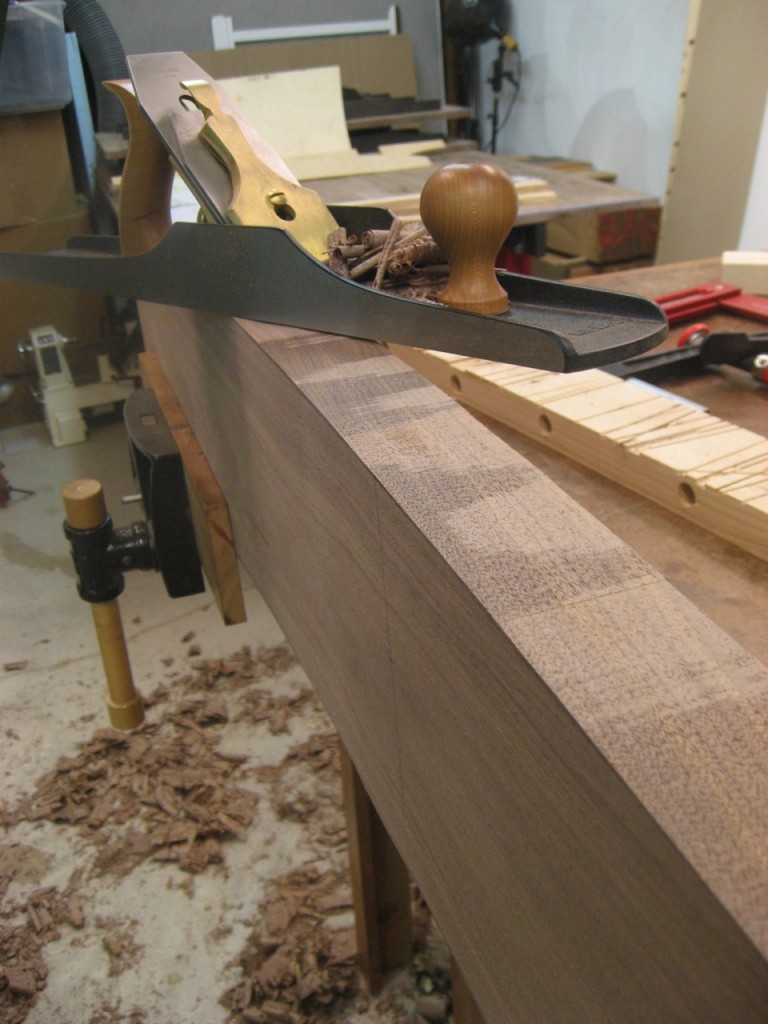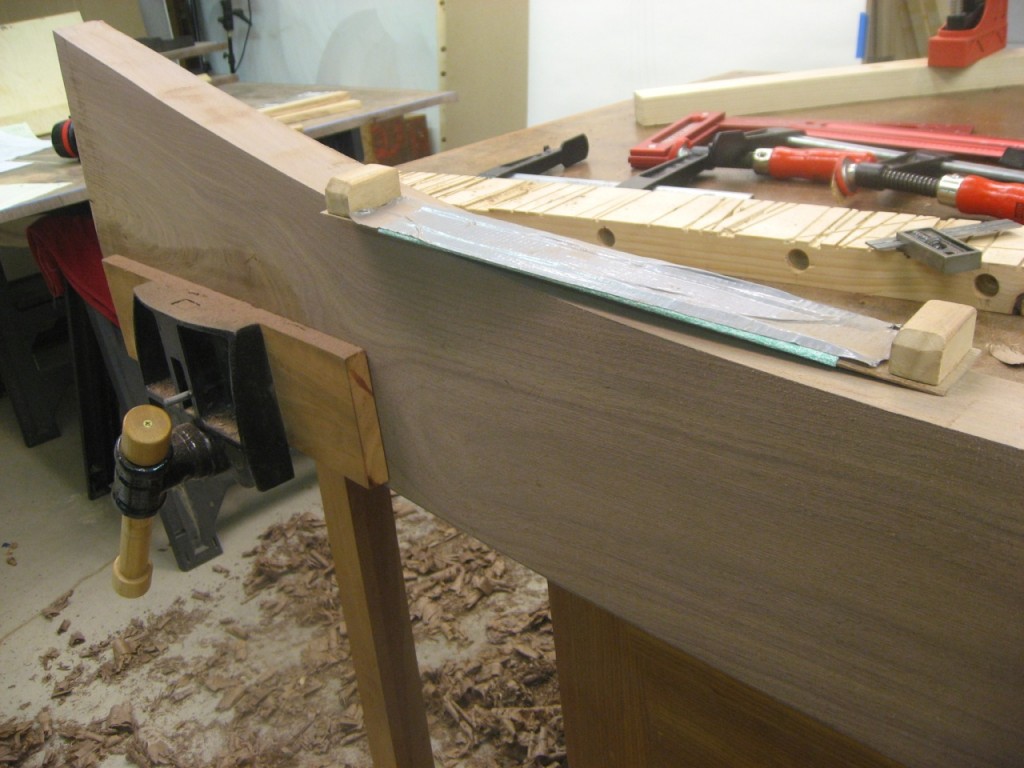Oct 252012
Now that the stretcher is flat, I decided upon the final curve using the grain. I found that bending a thin piece of wood around four nails did the trick.
Here you can see the curve following the grain.
Back to the bandsaw to remove the waste.
The convex section I could clean up with a hand plane, providing a really nice smooth edge.
Unfortunately I don’t have a compass plane for the concave side. I went with a flexible sanding strip. I’ve used rasps and spokeshaves in the past as well.







[…] Tips, Workshops & Instructors Oct 302012 I need to add a tenon to each end of the curved stretcher. I use my full-scale drawing to find the tenon locations. The tenon is defined from the full-scale […]